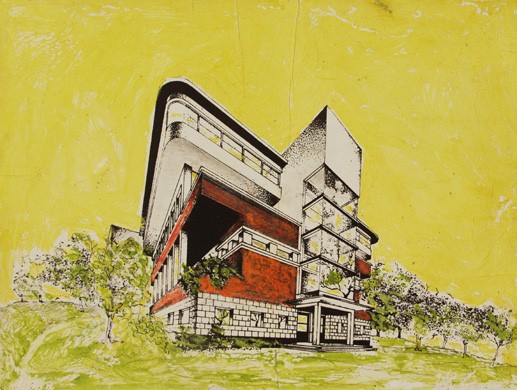Exploration, protection and promotion
Downloads
DOI:
https://doi.org/10.52200/docomomo.67.09Keywords:
Kyiv, Modernism, architectural monument, cultural heritage, preservationAbstract
This article attempts to demonstrate the changes that occur over a certain period in assessing the cultural heritage of different eras—from the scientific interest of individuals to wide public recognition. Today, the status of architectural monuments starts to be given to objects of the 1960s and 1980s, but these processes are accompanied by scientific and organizational problems. As an example, the author took the case of Kyiv, which includes many modern buildings of the 1920s-1930s and 1960s-1980s. The research is relevant, primarily considering the interest that modern architecture arouses in society today. At the same time, experts face a misunderstanding of the value of this architectural style, the objects of which are often endangered. Therefore, the relevance is strengthened by the negative trends of current construction processes in Kyiv, mass demolition or reconstruction of architectural heritage objects. The topic of cultural heritage protection is interdisciplinary—it combines the history of society and city life in general, the history of architecture, and actual architectural and artistic analysis. The article is mainly based on the practical experience of working with architectural monuments in Kyiv: their scientific research and preparation of legal documentation. The author does not analyze the value of Modernism as a recognized worldwide movement but depicts the peculiarities of its perception in society. This is facilitated by personal communication with a certain number of people, analysis of social networks and existing bureaucratic practices in the field of monument protection. Based on the analysis of Kyiv’s architectural heritage and existing public cases, the author concludes that only the joint work of architectural historians, experts in the field of monument protection and a wide range of interested city residents will allow to discover, research and preserve the maximum number of valuable modern buildings and sites, legally protect them by including them in the Register of immovable objects of cultural heritage.
How to Cite
Published
Issue
Section
License
Copyright (c) 2022 Olena Mokrousova

This work is licensed under a Creative Commons Attribution 4.0 International License.
Plaudit
References
BYKOV, A., & Gubkina, I. (2019). Soviet Modernism - Brutalism - Post-modernism. Buildings and Projects in Ukraine 1960-1990. Berlin: DOM publishers.
CHAUBIN, F. (2011). CCCP. Cosmic Communist Constructions Photographed, Köln: Taschen.
COUNCIL OF EUROPE (1985). Convention for the Protection of the Architectural Heritage of Europe (Granada, 1985), https://www.coe.int/en/web/culture-and-heritage/granada-convention, Accessed Nov. 20, 2022.
KNOCH, P., Johenning, H. M. (2015). Kiew. Architekturführer. Collaboration: Burlaka, Oleksandr; Gubkina, Ievgeniia; Tscherkes, Bohdan, Berlin: DOM publishers.
МOKROUSOVA O. H. (2015). Problemy avtentychnosti obiektiv kulturnoi spadshchyny na prykladi pamiatok m. Kyieva // Piaty Zarembivski chytannia [Problems of authenticity of objects of cultural heritage on the example of monuments of the city of Kyiv // Five readings by Zarembivsky].- К.: Tsentr pamiatkoznavstva NAN Ukrainy i UTOPIK, 221
Okhorona kulturnoi spadshchyny. Zbirnyk mizhnarodnykh dokumentiv [Protection of cultural heritage. Collection of international documents] К., 2002, 69 / Architect Iosif Karakis. Fate and creativity. Catalog album.-K. 2002





